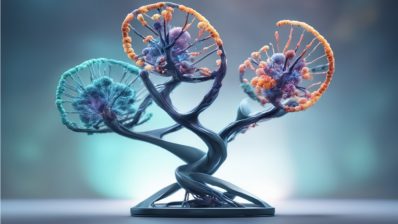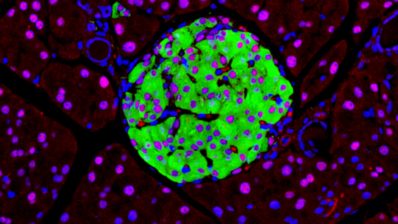In this image by Sergio Aranda, a PhD student at the Centre for Genomic Regulation (CRG), we can observe a mouse embryo in its first days of development, labelled with different colours.
Recently, a group of scientists at the CRG led by Luciano Di Croce, ICREA Research Professor, Sergio Aranda, the lead author and co-leader of the study and Eduard Sabidó, the head of the CRG-UPF Proteomics Unit, have identified a molecular mechanism that regulates the speed of stem cell division.
The AHCY protein, an enzyme-based sensor of nutrient metabolism, is involved in this mechanism. AHCY induces gene activation that, in turn, promotes embryonic stem cells proliferation. Thus, the availability of nutrients will determine the speed of division of embryonic stem cells. This is important because the presence of nutrients is essential for the correct development of the embryo.
This function, so far unkown, would enable scientists to provide tools for molecular diagnosis and the prediction of possible fertility problems in human beings, since the AHCY protein performs an irreplaceable function.
In this line, researchers want to study a possible association between AHCY and defects during embryonic development in human beings.

In the image above we can see, on the left, the representation of a preimplantational mouse blastocyst. On the right side we can see microscopy images showing three different markers:
- DAPI: a marker that binds to adenine and thymine-rich regions of the DNA sequences.
- NANOG: a marker of embryonic stem cells.
- AHCY: the AHCY protein marker.
- merge: the fusion of the three previous markers.
The blastocyst is a stage of the embryonic development in mammals in which we find:
- on the one hand, the inner cell mass (red and blue in the drawing), which will give rise to the embryo.
- on the other hand, the trophoectoderm (green), which consists of a peripheral layer of cells that will end up forming the placenta.
You can read more about this recent scientific study in the CRG website.
Would you like to see your photo here? Please send us pictures related to science or the PRBB to ellipse@prbb.org.
Aranda S, Alcaine-Colet A, Blanco E, Borràs E, Caillot C, Sabidó E, Di Croce L. Chromatin capture links the metabolic enzyme AHCY to stem cell proliferation. Science Advances, 5:eaav2448 (2019).






